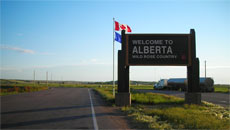LIKELY, B.C. - British Columbia says there has been a dramatic drop in the amount of material leaking from a breached tailings pond that contaminated waterways in the province's Cariboo region.
Millions of cubic metres of waste waster and silt have leaked into lakes, creeks and rivers surrounding the Mount Polley mine, near the town of Likely, since Monday.
The government says Imperial Mines Corp. (TSX:III), the company that owns the breached tailings pond, is creating a temporary dam to try to stop the leak.
Imperial Metals has said it could take three weeks for it to build a berm to halt the further spillage of water and debris from the tailings pond.
Public showers have been delivered to residents of Likely, who were affected by a water-use ban that lasted for days after the accident.
The ban has now been partially lifted, affecting most of the town and parts of the Quesnel River.
The advisory remains in place for communities that get their water from Polley Lake, Hazeltine Creek, Cariboo Creek and all parts of Quesnel Lake.
Initial tests from the province's environment ministry suggest water in some parts of the area is drinkable.
But some residents are still skeptical about the water quality.
Howard Fenton, who retired in Likely eight years ago, said he is still concerned about safety, though the water appears to be clear.
"It looks OK, but I wouldn't drink it," he said in an interview. "I'd wait for more tests. I don't want to have anything to do with the water until I know for sure what's going on."
He said he would not consider eating fish caught from the waterways for the immediate future.
"Not a chance," said Fenton. "The biologists have told us the fish in a week or so living in the water aren't going to show significant signs of contamination, it has to build up in their system and tissue before you can actually tell what it's doing to the fish."
The area around Likely was one of the only places where he could both drink and swim in the water, but that is no longer the case, Fenton said.
The release of 10 million cubic metres of water and 4.5 million cubic metres of silt has raised fears about the potential long-term effect on drinking water, fish stocks and the region's ecosystem.





